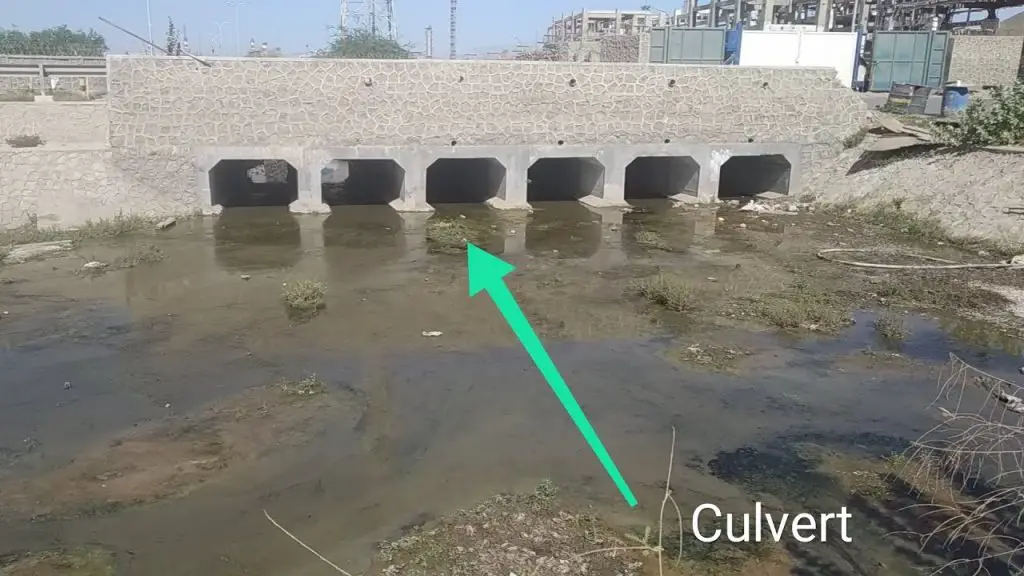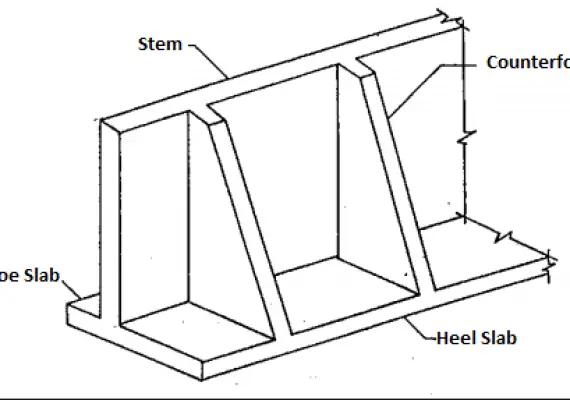Culverts | Types of Culverts| Box Culverts | Pipe Culverts | Arch Culverts
Culverts | Types of Culverts| Box Culverts | Pipe Culverts | Arch Culverts
What are Culverts?
Culverts can be defined as small channels that allow water to flow under a railroad, trail, road or similar obstruction from one side to the other. A culvert is a drain of the watercourse, totally enclosed and usually carried under a road or railway track.
Types of Culverts
The following are the common types of Culverts
- Box Culvert
- Pipe Culvert
- Arch Culvert
Pipe Culverts
Pipe culverts are most economical for small drainage crossings. These culverts are generally constructed for diameters less than 1.8 m. The pipes may be of cast iron or RCC. If the soil is of low bearing capacity, the pipes should be bedded in a layer of concrete.
If the discharge of water is more, more than one pipe can be used.
Arch Culvert
Arch Culvert is constructed on brick or stone masonry are concrete walls, having short spans of 2 to 3 m. Depending upon the loading span and type of construction, the thickness of often arches maybe 20 to 50 centimeters. Above the crown of an arch on earth Cushion of at least 45 centimeters should be provided
Box Culverts
What is a box culvert?
A Box Culvert is a bridge structure that carries a road over a waterway, another road, a railroad, or a ravine. It’s also the most common type of bridge structure used in due to it being cost-efficient and takes much less time to build
A Box culvert consists of one or more square or rectangular openings made of RCC or masonry, but RCC box culverts are widely used.
Box culverts are used for spans less than 4 m and an RCC box culvert is a cheaper alternative for a pipe culvert. The abutments, top, and bottom slabs are all cast monolithically.
Box Culvert Construction
Process of Building a Box Culverts
In the process of inserting a box cover before anything can take place on the job site, a geotextile fence must be placed around the perimeter.
Any areas that could be disturbed must be within the fenced area.
Then the area could be grabbed. This is when all the brush and trees are removed from the necessary areas.
The waterway could be blocked off once the fences in place. This could be done with sandbags or metal sheets.
Once the waterways are blocked off on both sides of the existing bridge structure, the water can be pumped out from the hole and the existing structure can be removed.
The water is pumped into a dewatering system.
Excavation, Culvert placement, and Backfilling
Excavation
Excavation is when the soil particles are removed from the desired areas. The plan will specify how deep the hole must be done and how steep the slope should be.
Now that the hole is dug, geotextile fabric can be laid down enough to cover the entire area. Then coarse aggregate bedding is dropped in the hole and compacted.
The culvert is placed on top of the coarse aggregate bedding. Each of these steps are done to a specific elevation, as said in the plan
After the culvert is placed dirt is then dropped on both sides of the culvert in 12-inch lifts. The dirt is compacted, another 12-inch lift displaced, and then the process starts over again.
It’s important to alternate sides, so if the culvert doesn’t shift, so you do 12 inches on one side and then move over and do 12 inches on the other.
Backfilling is a payable item. This means that the quantity used must be measured because the customer only pays for the amount used and not the task that’s being completed.
Seeding, Fertilizer, and Blanketing
All disturbed areas of the job site must be restored to their natural state. This is the law.
First, the areas are seeded and fertilized by hand, and then the area is blanket with a straw side blanket.
The blanket also serves as erosion control. This helps keep the slopes from failing.
Final Finishing
Rocks are placed at the ends of the aprons. These rocks are known as rip-rap, and the aprons can be the end pieces or the mouth of the culvert.
The sheets blocking the stream are then pulled and the signs are replaced, and the geotextile fabric is removed
What is the Difference Between Bridge and Culverts?
The main purpose of both culvert and bridges is providing an easier route over obstruction but here is the key difference:
Main differences between bridges and culverts:
A Bridge |
A Culvert |
|
| 1 | A bridge is a passage of vehicles and people over a physical obstruction or large water body. | A culvert is typically a tunnel-like structure that allows water passage under a roadway or railway. |
| 2 | The main parts of a bridge are the substructure (transfers load to foundation soil), superstructure (supports load), and deck that transfers the surface load to other components. | The parts of a culvert are relatively simpler and include concrete boxes or cells (single or multiple), pipes, a top deck or slab, and supporting parts. |
| 3 | Bridges are constructed on span length of more than 6M to more than 120 meters. | Culverts are constructed span length of fewer than 6m over the obstruction. |
| 4 | Bridges can support and able to withstand speeding and heavy vehicles. | Some culverts have sharp corners that are not suitable for high speeding vehicles. |
| 5 | Abutments and piers are the supporting structures of a bridge. | Culverts are typically embedded in the soil which bears the weight or load of the culverts. |
| 6 | A bridge contains no floor. | A culvert is an enveloping structure that consists of two sides, a roof, and a floor. |
| 7 | Bridge construction require a deep and strong foundation | Culverts do not require a deep foundation. |
| 8 | Many bridge types are usually linear and straight. | Culverts are completely enclosed structures and can be rectangular, semi-circular, elliptical, or pear-shaped. |
| 9 | The design structure of a bridge is detailed and complex, therefore building a bridge requires a substantial budget. | The design of culverts is not complex and the building of a culvert can be done with a small budget. |
| 10 | Typically, bridges are built on-site or pre-constructed in smaller sectional parts. | Mostly, Culverts can be pre-constructed or built at the site (in situ culverts). |
| 11 | Building bridges generally need a lot of manpower and time. | Culverts are simpler in design and structure and can be built with less labor and time. |
| 12 | Majorly bridges are constructed to aid transportation therefore reduces distance and saves time. | Typically, culverts are built to prevent floods, waterlogging, erosion, and allows water to flow its natural course under a railroad or roads. |
| 13 | The only way of transportation is over the deck of the bridge. | A culvert can be constructed to accommodate roadways both over and under the deck (e.g. a culvert built over another road or railway). |


